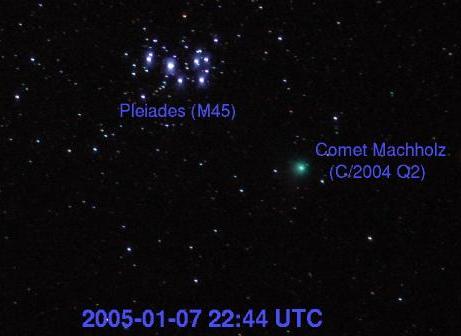« January 7, 2005 | Main | January 9, 2005 »
Saturday, January 8, 2005
Entropic Storm: Zap a Laptop
It's hardly a news flash that it gets cold in Switzerland in the winter, especially at Fourmilab's altitude of 806 metres above mean sea level. When it's cold outside, relative humidity inside plunges, and static electricity manifests itself everywhere in irritating fat blue sparks whenever finger approaches metal. Humidifiers mitigate the effect, but you can't use them everywhere, and they don't help when you've been outside and just walked into a warm room, fully charged. For the most part, this is a minor annoyance, but after I migrated my development work to a Dell Inspiron 9100 laptop a few months ago, it's been a matter of some concern because on three separate occasions so far I've entered the computer room from outside, touched the metal frame of the work table on which the computer sits (as I always to do discharge any static electricity before touching the computer keyboard or mouse), and had the laptop immediately power down without any soft shutdown of the operating system whatsoever. Apparently this computer is unusually vulnerable to EMP discharges in its vicinity, so much so that simply discharging static electricity to the metal frame which supports the particle board table on which it sits is enough to make it turn itself off. The Dell mains adaptor has a three prong grounded plug, and I verified with an ohmmeter that when it's plugged in, the chassis of the laptop is grounded to mains safety ground. Since the metal frame of the table wasn't grounded but was simply serving as a charge sink, perhaps it was acting as an antenna to deliver the electromagnetic punch to the guts of the Dell. In any case, these static zap induced power downs are extremely irritating and risky to work in progress, so to attempt to avoid them I cobbled up this grounding strap to create a low impedance ground between the frame of the work table (which I always touch before touching the computer keyboard or mouse) and the chassis of the computer, via the safety ground of the UPS into which the laptop's power brick is plugged. The ground wire is a sturdy solid copper conductor, soldered to the lug, which is fastened with a self-tapping 3.5 mm screw and lockwasher to a hole I bored in the table. The other end of the ground strap is connected to the safety ground terminal of the mains plug, the other two pins of which are unconnected. Steel is sturdy stuff! It took the better part of an hour, off and on, to bore a 3 mm hole through the frame of the table, which is only about 1 mm thick. A drill press would have made quick work of the job, but I don't have one and wouldn't want to tear down the table anyway, so I used a handheld drill instead. Yes, I powered down the computer so its hard drive wouldn't be spinning while I bored the hole in the table. Does it work? Well, I don't know yet. I'm not about to deliberately charge myself up and try an experimental zap. I'm sure the inevitable inadvertent shocking event will put the gizmo to the test in the near future, and I'll let you know whether it worked when that happens.Comet Machholz Passes the Pleiades
